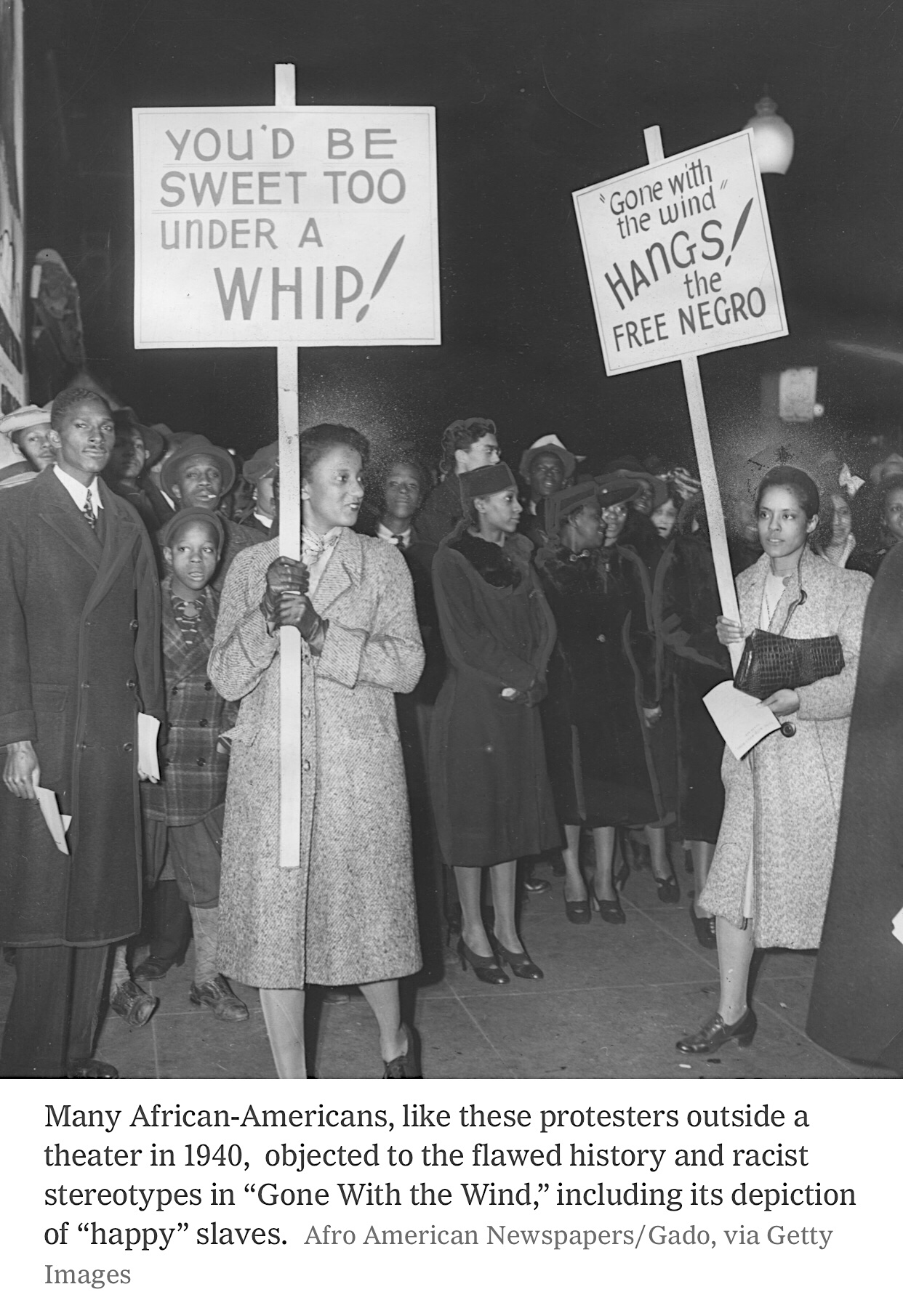Jennifer Schuessler‘s “The Long Battle Over Gone With the Wind,” a perceptive and mostly fair-minded summary of the varied reactions to David O. Selznick‘s 1939 classic over the decades, appeared in yesterday’s N.Y. Times.
I felt conflicted about paragraph #24, which says that when GWTW opened “white audiences…were largely swept up in celebration of the nearly four-hour Technicolor epic, with its hundreds of extras, lavish costumes and themes of grit and survival that resonated with a country emerging from the Depression.”
I said roughly the same thing in my 6.9 piece about reactions to the film (“A Minor Point At Such A Moment“). As a parable about the deprivations of the Great Depression, I wrote, GWTW “is fundamentally about how life separates the survivors from the victims when the chips are down, and about the necessity of scrappy, hand-to-mouth survival under the cruelest and most miserable of conditions…it basically says ‘only the strongest and the most determined survive.'”
But how was this something that only “white” audiences understood?
True, African Americans have long dealt with far more hardships and uphill situations than whites, and especially during the 1930s, but grit and steel are necessities within any tribe or culture in any time period. “Survival of the toughest” is a recognized rule all over the world.

From “A Minor Point At Such A Moment,” posted on 6.9.20.











